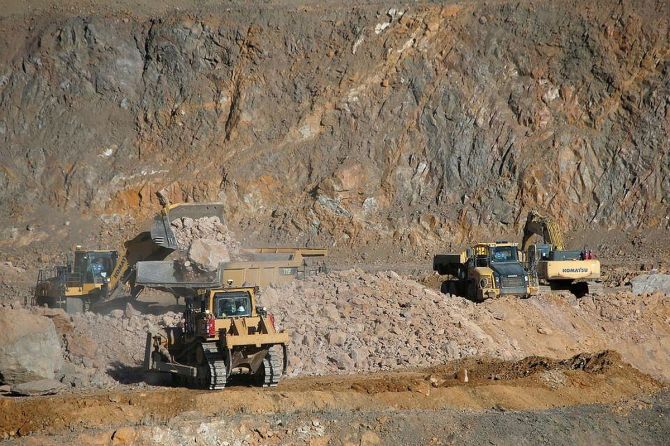In a step towards diversifying its resource base and securing green energy minerals, India is poised to launch its first-ever offshore mineral auction in the first quarter of 2024, announced Union Minister of Mines Pralhad Joshi during the launch event of the National Geoscience Data Repository portal.

The government plans to hold auctions in March, offering 10-15 blocks for bidding.
Meanwhile, the ministry of mines is currently developing rules and regulations for offshore mining.
“Ten to 15 blocks are prepared for auction.
"The regulations will be released for consultation shortly,” V L Kantha Rao, secretary, ministry of mines, told Business Standard.
The ministry is currently conducting inter-ministerial consultations involving the Ministry of Earth Sciences, Ministry of Defence, Department of Atomic Energy, and other relevant bodies to secure all necessary clearances.
The government’s move to auction offshore blocks comes months after the approval of the Offshore Areas Mineral (Development and Regulation) Act, 2002, on August 10.
Additionally, on November 29, the government launched its inaugural auction process for 20 critical minerals blocks spread across seven states and one Union Territory.
Critical minerals are defined as those essential to the economic and national security of a nation but have a supply chain vulnerable to disruption.
The Geological Survey of India (GSI) has identified polymetallic nodules, also known as manganese nodules, along with sand and gravel in offshore areas. Polymetallic nodules primarily contain iron, manganese, nickel, copper, and cobalt.
Moreover, offshore regions serve as reservoirs of sand and gravel, crucial for construction, beach nourishment, and land reclamation projects.
Additionally, rare earth elements have also been discovered beneath the sea.
Offshore minerals are found in all three large bodies of water — the Indian Ocean, Arabian Sea, and Bay of Bengal — that surround the Indian peninsula.
Embarking on its offshore expedition, India is poised to explore its vast exclusive economic zone (EEZ), covering around 2.37 million square kilometres (915,057 square miles).
This zone stretches 200 nautical miles (370.4 kilometres) from the baseline of India’s territorial waters.
As India ventures into offshore mining, the nation’s obvious geological potential (OGP) is anticipated to expand beyond its existing 6.88 lakh square kilometre notably.
“Following the national geochemical mapping, the OGP area has seen a significant surge and is expected to continue growing,” said Janardan Prasad, director-general, GSI.
While India’s EEZ offers a strategic advantage in obtaining critical minerals crucial for accessing seabed resources essential for electric vehicles and green technologies, the commercial extraction of these resources faces significant hurdles owing to technological and environmental challenges.
According to a US Geological Survey report published in June 2022, deepsea mineral mining has not yet commenced.
Although commercial mining for polymetallic nodules is not presently underway, numerous countries, including Australia, Canada, China, Japan, South Korea, Singapore, and Germany, are actively engaged in exploration and development endeavours for these resources.
Sand and gravel extraction, however, is a prevalent practice because extraction generally occurs within a few kilometres of the coastline, whereas deep-seated polymetallic nodules, found at depths often surpassing 4,000 metres, present a significant contrast in their location and accessibility.
Nations such as the Netherlands, Belgium, Denmark, the UK, the US, China, and others heavily utilise sand and gravel resources for construction and land reclamation projects.
The sea hunt
GSI discovery: Polymetallic nodules, sand, gravel, and REE found in Indian Ocean, Arabian Sea, and Bay of Bengal surrounding Indian peninsula
Vast potential: India’s EEZ, covering 2.37 million sq. km, holds promising resources
Commercial mining status: No large-scale global initiation of deepsea mineral mining has occurred
Global Interest: Belgium, China, Japan, South Korea, Singapore, Germany exploring, with a few engaging in small-scale mining ops
Sand & gravel extraction: Widespread near coastlines, extraction is common in the Netherlands, Belgium, Denmark, the UK, the US, and China











